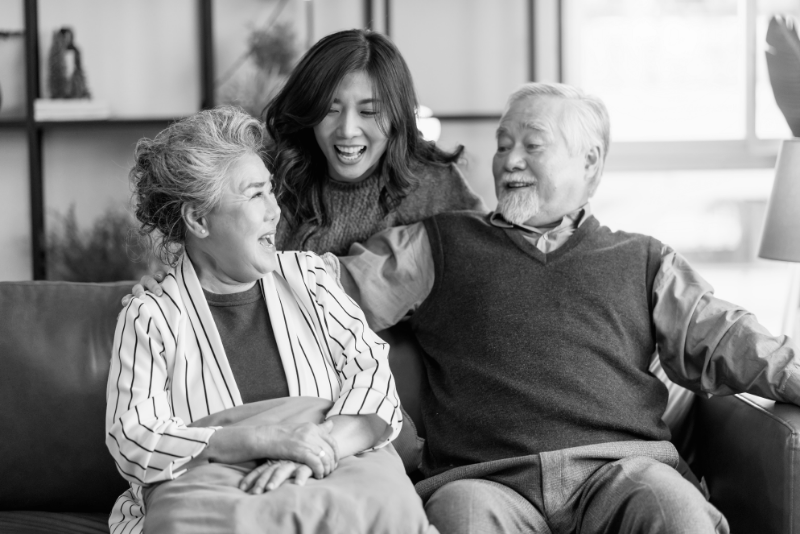Many individuals struggle to achieve healthy attachments due to society’s prevalence of broken relationships. At some point, you may have wondered, “How does your parents’ relationship affect you?”
For instance, you might have grown up with parents in a constant “on-again, off-again” state. Later, you notice that when you argue with your partner, you crave reassurance and become very clingy, seeking constant communication despite the continuing conflict. This struggle often stems from the attachment styles you’ve witnessed through your parents’ relationship.
This article will explore different types of parental relationships you may have witnessed and their effects on your adult relationships. Understanding these dynamics helps you navigate your relationships better.
Read on to discover the connection between your parents’ bond and your attachment style, empowering you to navigate love more effectively.
Exploring attachment theory
Attachment theory reveals that the quality of your early interactions with caregivers, particularly your parents, lays the groundwork for how you build relationships as adults.
These early interactions model healthy relationships that you then carry on through time, impacting how you connect with others emotionally. Impressionable children closely observe the dynamics between their parents, absorbing their communication patterns, conflict resolution styles, and expressions of affection. This becomes a blueprint for their own expectations in future relationships.
Imagine a recent fight you had with your best friend. You — raised in an open and communicative household — directly express your hurt feelings and desire for resolution. Conversely, your friend, from a background where emotions were avoided, feels overwhelmed and withdraws, suggesting you “drop it.”
Your respective frustrations and coping mechanisms mirror your attachment styles. And while this exact situation may not have happened, the underlying psychology is the same: early experiences with caregivers shape how you handle your adult relationships.
Observing parent-to-parent relationships thus forms a basis for attachment in impressionable children.
Witnessing a secure, loving relationship can foster a sense of security. Unfortunately, the reverse is also true. Observing a conflicted or detached relationship often leads to anxiety, avoidance, or worse in future relationships.
The results of witnessing broken parental relationships
Parents and teenager relationship dynamics are particularly crucial, as this period coincides with a child’s burgeoning interest in romantic relationships. Here’s how witnessing specific types of parental relationships shapes attachment styles:
Conflicted attachment
Witnessing frequent arguments, emotional volatility, or unresolved tension between parents can lead to an anxious attachment style in children.
During a disagreement with a friend or romantic partner, how do you seek (or avoid) comfort? Do you readily reach out for support and openly express your emotions, or do you withdraw and isolate yourself? This behavior can be a clue to the attachment style you developed based on your parents’ relationship.
People with conflicted attachment crave intimacy but struggle with trust, fearing abandonment and feeling overly dependent on their partners.
Detached attachment
Children raised by emotionally distant parents who display little affection or support may develop an avoidant attachment style. They might prioritize independence, downplay emotional needs, and have difficulty forming close bonds with others.
Secure attachment
Children raised in secure environments, where parents display affection, communicate effectively, and resolve conflict constructively, are more likely to develop a secure attachment style themselves. They tend to be comfortable with intimacy, trust others easily, and have a healthy sense of self-worth.
Identifying personal attachment styles
Understanding attachment types is a transformative step in improving your relationships. The following aspects can help identify attachment styles based on perceptions and experiences of their parents’ relationship.
Self-assessment techniques
Consider self-assessment techniques to delve into your attachment style. Reflective journaling provides a powerful tool for introspection. Prompt yourself in key areas like intimacy, trust, conflict resolution, and relationship independence.
Read more: Mindful Musings: Harnessing the Healing Energy of Journaling
As you write, observe recurring themes and emotions.
Do your entries reveal a desire for constant reassurance (anxious), a preference for independence over closeness (avoidant), or a struggle between intimacy and distance (disorganized)?
While not a definitive answer, online attachment-style quizzes can offer a starting point for reflection. Choose reputable sources and view the results as a springboard for further exploration.
Examining your past relationships can also be revealing. Did you tend to be anxious and clingy, or did you pull away when things became serious? Noticing patterns when connecting with others can shed light on your attachment style.
To delve deeper, consider your childhood memories. Were your caregivers readily available and supportive, or do you have a bad relationship with your parents? These early experiences often shape how we connect with others later in life.
Enhancing relationship skills
Once individuals understand their attachment style, they can use this knowledge to cultivate healthier personal relationships. While your parents’ relationship may have influenced your attachment style, it doesn’t have to define your future relationships. Here are strategies to cultivate healthier connections despite these tendencies:
- If you have an anxious attachment style. Focus on building trust with open communication. Share your feelings honestly and listen actively to your partner. Consistent actions build trust. Develop healthy coping mechanisms for anxiety through meditation or spending time in nature. Finally, embrace healthy boundaries and prioritize your needs.
- For those with an avoidant attachment style. Challenge your fear of intimacy by being vulnerable and openly sharing your thoughts and feelings, even if it feels uncomfortable. Practice expressing your needs clearly and celebrate emotional connection as a positive aspect of relationships.
- If you have a detached attachment style. Seek professional guidance from a therapist to explore your attachment style and develop coping mechanisms for emotional instability. Focus on self-compassion, be kind to yourself, and remember healing takes time. Build a supportive network of positive people who create a safe space for emotional expression.
Read more: Daily Meditations for Anxiety
Building trust and security
These two traits mirror the safe haven a secure attachment style provides in childhood. Here’s how to cultivate these essential ingredients.
- Open and honest communication is key. Share your thoughts and feelings openly, even when it is difficult. Actively listen and validate your partner’s emotions to build a deeper connection.
- Consistency and reliability are equally important. Follow through on commitments, big or small, to show your partner they can depend on you.
- Respectful boundaries are essential. Communicate your needs clearly and respect your partners, creating a safe space for individual expression and growth.
- Embrace vulnerability and emotional availability. Share your fears, hopes, and dreams, allowing yourself to be emotionally present for a stronger bond.
- Practice empathy and compassion. Strive to understand your partner’s perspective, acknowledge their feelings, and offer support. This will create a safe space for emotional expression and strengthen your relationship’s sense of security.
In conclusion
Because the prevalence of broken relationships makes healthy attachments difficult, examining how your parents’ dynamic shaped your approach to love is critical if you want a healthy, thriving relationship. This constant influence is why the lingering effects of parental relationships continue to impact your relationships throughout life.
You can take practical steps to adjust your relationship patterns by exploring attachment theory and recognizing personal attachment styles. Applying these insights and strategies can enhance your relational dynamics and promote healthier future relationships.
If you would like to see more resources on biological families, check out the Personal Science Labs. The lab uses the research of the Institute for Life Management Science to produce courses, certifications, podcasts, videos, and other tools. Visit the Personal Science Labs today.
Photo by Lifestylememory on Freepik


